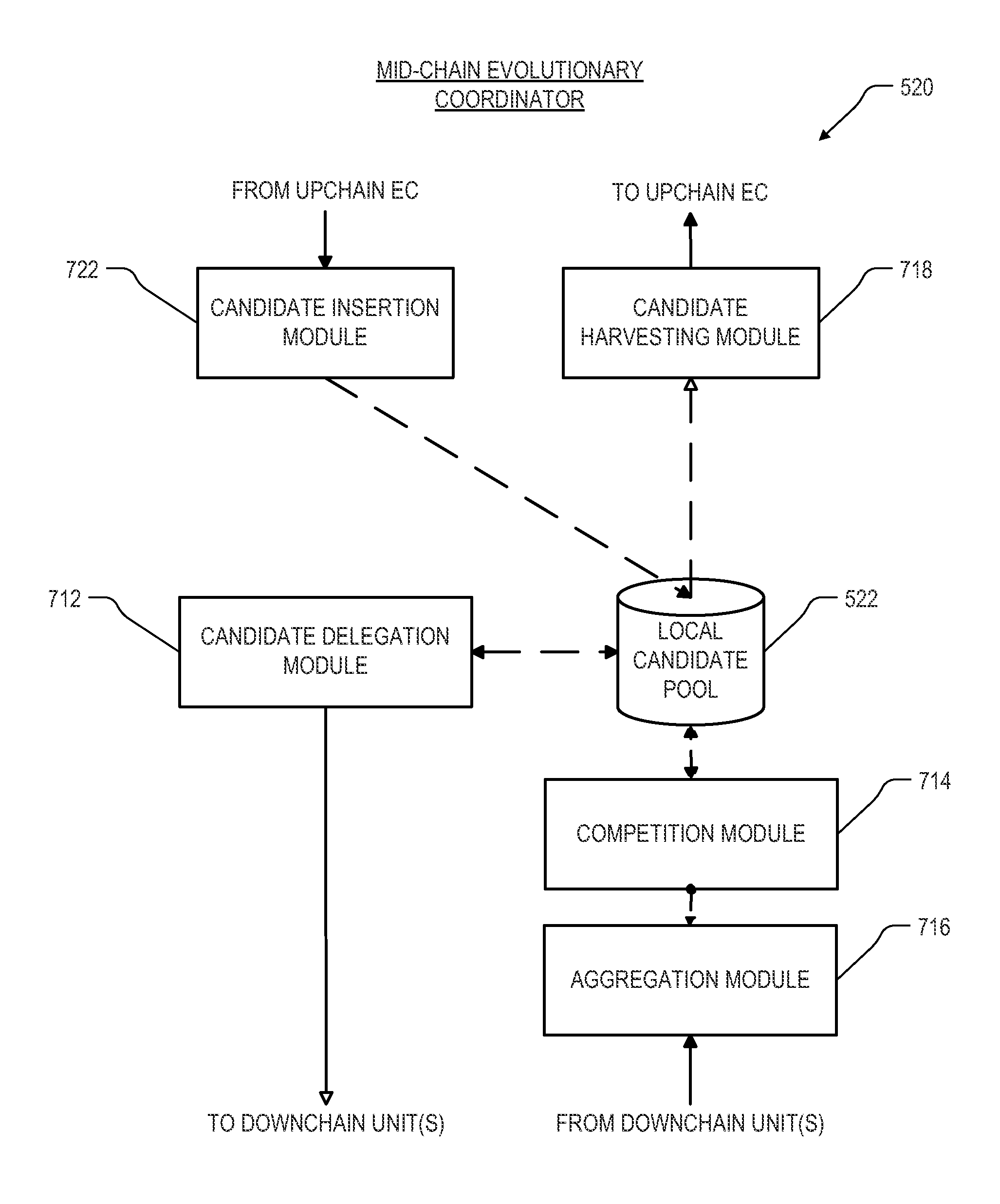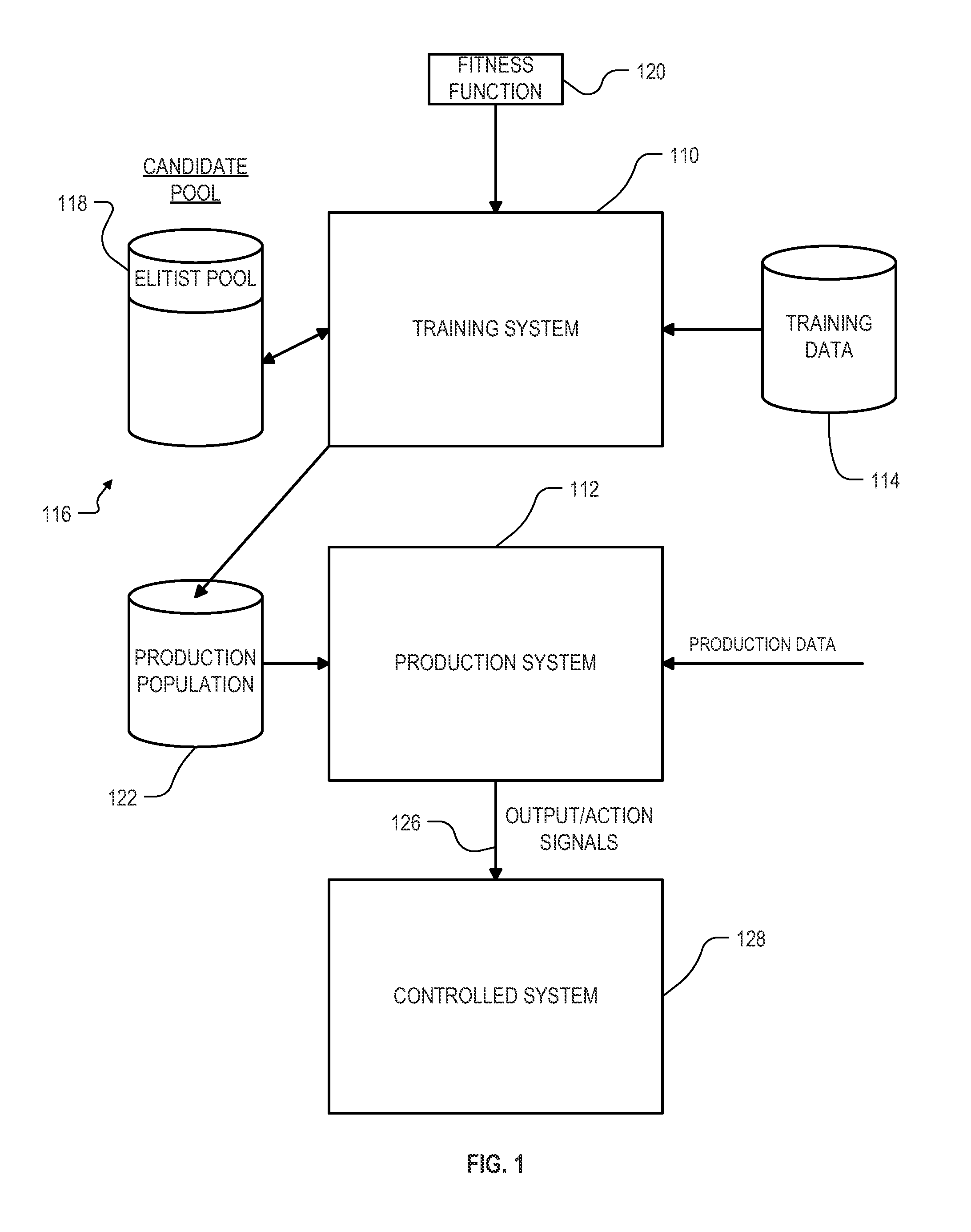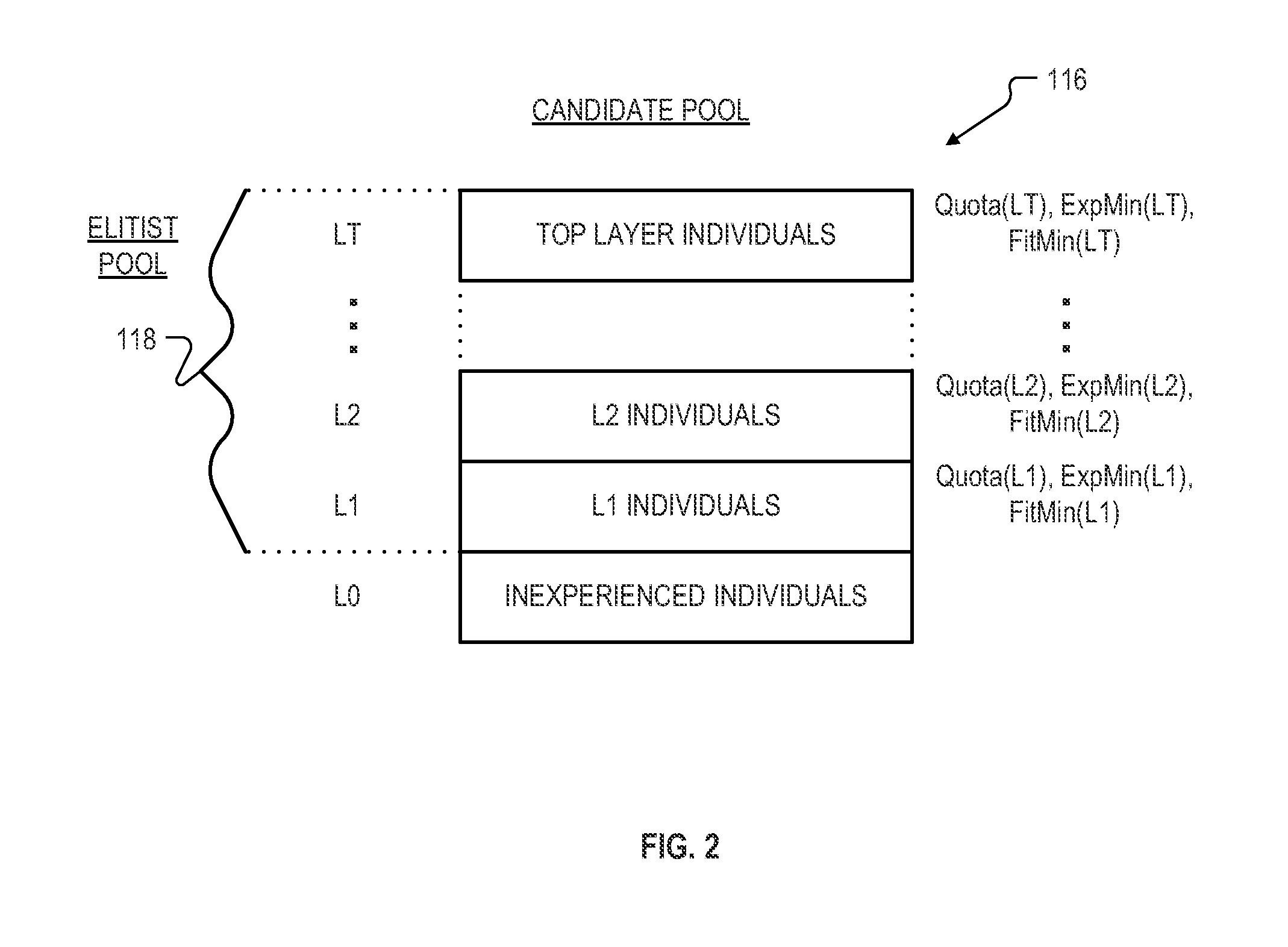Data mining technique with federated evolutionary coordination
a data mining and evolutionary coordination technology, applied in the field of data mining, can solve the problems of increasing the workload of the top-chain evolutionary coordinator pool. , to achieve the effect of reducing the workload of the top-chain evolutionary coordinator pool and reducing the bandwidth requirements
- Summary
- Abstract
- Description
- Claims
- Application Information
AI Technical Summary
Benefits of technology
Problems solved by technology
Method used
Image
Examples
example embodiment
[0039]FIG. 1 is an overall diagram of an embodiment of a data mining system incorporating features of the invention. The system is divided into three portions, a training system 110, a production system 112, and a controlled system 128. The training system 110 interacts with a database 114 containing training data, as well as with another database 116 containing the candidate pool. As used herein, the term “database” does not necessarily imply any unity of structure. For example, two or more separate databases, when considered together, still constitute a “database” as that term is used herein. In particular, though candidate pool 116 may appear in FIG. 1 as a unitary structure, whereas in the federated embodiments described herein it is actually spread over multiple storage units. The candidate pool database 116 includes a portion 118 containing the elitist pool. The training system 110 operates according to a fitness function 120, which indicates to the training system 110 how to ...
example sequence
[0108]Given the above principles, the following is an example sequence of steps that might occur in the arrangement of FIG. 5 as individuals are created, tested, subjected to competition, evolved, and eventually harvested. Many steps are omitted as the system operates on numerous individuals and numerous evolutionary not mentioned herein. Many steps are omitted also in between the steps set forth, for purposes of clarity. In addition, for purposes of clarity several of the evolutionary units in FIG. 5 are referred to by shorthand abbreviations EC1, EC2, EC4, EE2, EE3, EE4, EE5, EE6 and TEC, all as indicated in FIG. 5.
[0109]EE2 creates candidates, including Individual #1, writes to local candidate pool
[0110]EE2 tests the candidates in local candidate pool, including discarding some through local competition, procreating to make new candidates, and creating new candidates randomly
[0111]Individual #1 reaches top layer in local candidate pool
[0112]EE2 transmits candidates from top layer...
PUM
 Login to View More
Login to View More Abstract
Description
Claims
Application Information
 Login to View More
Login to View More - R&D
- Intellectual Property
- Life Sciences
- Materials
- Tech Scout
- Unparalleled Data Quality
- Higher Quality Content
- 60% Fewer Hallucinations
Browse by: Latest US Patents, China's latest patents, Technical Efficacy Thesaurus, Application Domain, Technology Topic, Popular Technical Reports.
© 2025 PatSnap. All rights reserved.Legal|Privacy policy|Modern Slavery Act Transparency Statement|Sitemap|About US| Contact US: help@patsnap.com



